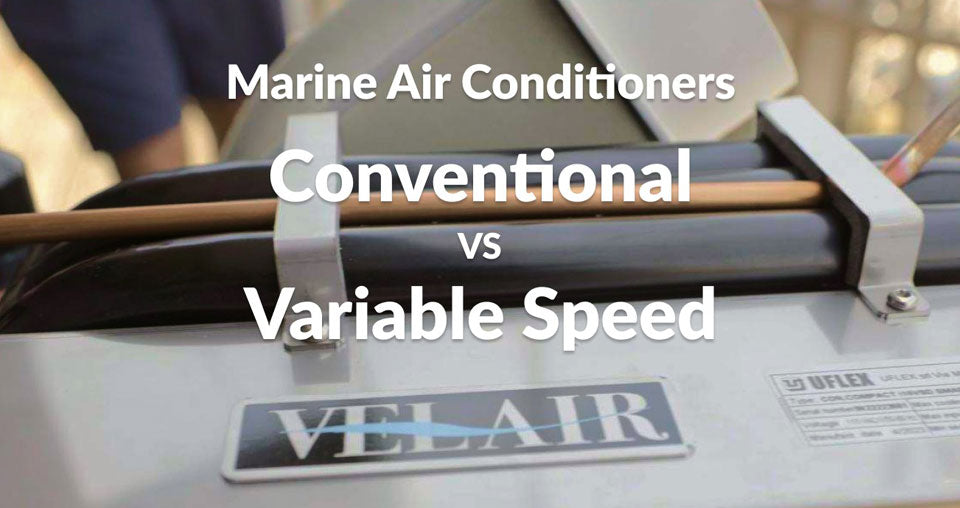In today’s review, we’ll be comparing two marine air conditioners: a conventional model and a variable speed model. These two units operate quite differently, and understanding their distinctions is crucial when choosing the right one for your needs. I’ll outline the key features and benefits of each type and provide my recommendations based on their performance and functionality.
Let’s start with the conventional marine air conditioner. This unit utilizes a single-speed compressor, meaning it either runs at full blast or shuts off completely. When the compressor starts, it draws a significant load, which can pose challenges when using smaller inverters or generators. However, there are workarounds available, such as adding a soft start device to alleviate the startup load and enable operation with limited power sources.
With a conventional air conditioner, you’ll experience temperature fluctuations as the compressor cycles on and off to maintain the desired temperature. This constant on-off cycling can result in slight temperature deviations and can be quite noticeable, causing potential discomfort. Additionally, the noise level can be relatively high, especially during the compressor’s abrupt startup and shutdown phases.
In contrast, a variable speed marine air conditioner offers several advantages. The primary distinction lies in its compressor, which operates within a range of speeds rather than just being on or off. This eliminates the startup load altogether, allowing the unit to run smoothly without placing a sudden strain on power sources.
The variable speed compressor adjusts its speed based on the desired temperature, providing a more consistent and precise cooling experience. Once the temperature is set, the compressor slows down to maintain the desired comfort level, resulting in a constant flow of cool air. The noise level is significantly reduced compared to conventional units, making for a quieter and more pleasant environment onboard.
Energy efficiency is another notable advantage of variable speed air conditioners. While power consumption can vary depending on the specific model, generally, they tend to be more energy-efficient than conventional counterparts. This means lower electricity usage, potentially saving you money and reducing your environmental footprint.
Furthermore, variable speed air conditioners often come with additional features and modes that enhance their versatility. For instance, some models offer an eco mode or night mode, allowing you to reduce the compressor speed even further for optimal energy conservation while still providing sufficient cooling for smaller spaces like sleeping cabins. This flexibility enables usage with inverters and batteries, making them suitable for overnight operation without draining excessive power.
Based on my experience and the benefits highlighted, I highly recommend opting for a variable speed marine air conditioner over a conventional one. The consistent cooling, reduced noise, energy efficiency, and additional features make variable speed units a superior choice for maintaining a comfortable onboard environment. In my upcoming video, I’ll provide a performance demonstration and share measurements to further illustrate the advantages of variable speed air conditioners.





